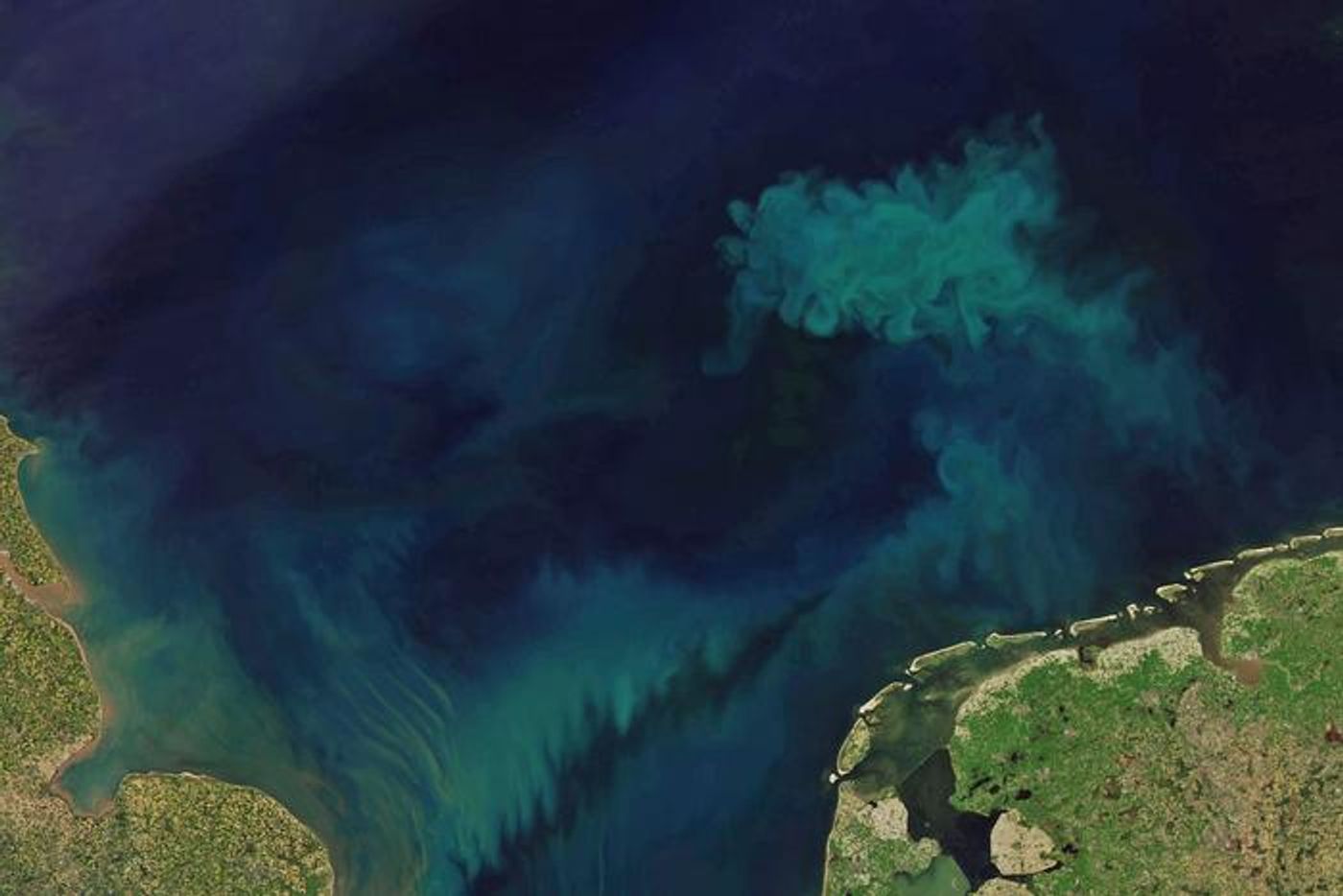Ocean Color Variations: Evidence of Human Impact on Marine Environments
A recent study published in Nature examines anthropogenic (human-caused) climate change has resulted in drastic changes in the ocean’s color over the last two decades. This study holds the potential to help scientists better understand the long-term effects of climate change on the oceans and its ecosystems, specifically phytoplankton, which is responsible for using the green pigment chlorophyll to convert atmospheric carbon dioxide into sugars.
This study builds off previous research that stated it would require a minimum of three decades of seamless observations of phytoplankton to identify ocean color changes that would likely be caused by anthropogenic climate change. However, this most recent study cuts that time by a full decade, as the researchers have observed ocean color variations that would not occur due to natural processes. Specifically, the team found that tropical oceans close to the equator have gradually increased their green color over time, as the color generally indicates the presence of organisms and other substances present.
“I’ve been running simulations that have been telling me for years that these changes in ocean color are going to happen,” said Dr. Stephanie Dutkiewicz, who is a senior research scientist in the Department of Earth, Atmospheric and Planetary Sciences at the Massachusetts Institute of Technology, and a co-author on the study. “To actually see it happening for real is not surprising but frightening. And these changes are consistent with man-induced changes to our climate.”
For the study, the researchers analyzed remote-sensing reflectance (Rrs) data collected over the course of 21 years by the Moderate Resolution Imaging Spectroradiometer (MODIS) instrument onboard NASA’s Aqua satellite. MODIS is designed to help scientists collect data regarding changes on the Earth’s surface from both natural and human-caused processes. Along with MODIS being able to collect data at seven visible wavelengths, two of these colors are what scientists commonly use to examine chlorophyll.
Scientists analyzed data measurements of ocean color variations obtained by the Moderate Resolution Imaging Spectroradiometer (MODIS) aboard NASA’s Aqua satellite, which has been observing ocean color for over two decades. (Credit: NASA and Joshua Stevens, using Landsat data from the U.S. Geological Survey and MODIS data from LANCE/EOSDIS Rapid Response)
After carefully analyzing the data collected between 2002 to 2022, the team examined a myriad of ocean color changes at the localized and larger scales. They then compared these findings to a 2019 model developed by Dr. Dutkiewicz meant to better understand ocean color changes under scenarios of greenhouses gases (GHG) and without GHG. In the end, they found the data matched the model almost exactly.
“This suggests that the trends we observe are not a random variation in the Earth system,” said Dr. B.B. Cael, who is a pricipal scientist at the National Oceanography Center, and lead author of the study. “This is consistent with anthropogenic climate change.”
The study’s findings indicate that observing ocean colors variations other than chlorophyll can provide researchers with a faster and more accurate method in determining how climate change is impacting ocean ecosystems.
What new discoveries will scientists make about human-caused climate change and ocean color variations in the coming years and decades? Only time will tell, and this is why we science!
Sources: Nature, National Oceanic and Atmospheric Administration, NASA, EurekAlert!, United States Geological Survey, NASA (1), United States Environmental Protection Agency
As always, keep doing science & keep looking up!









